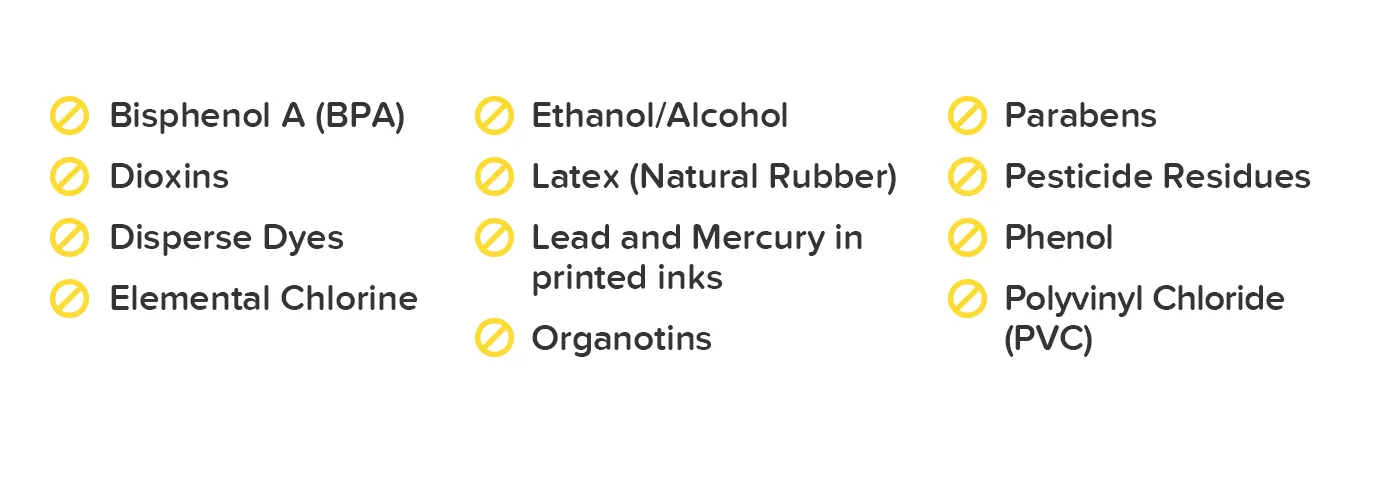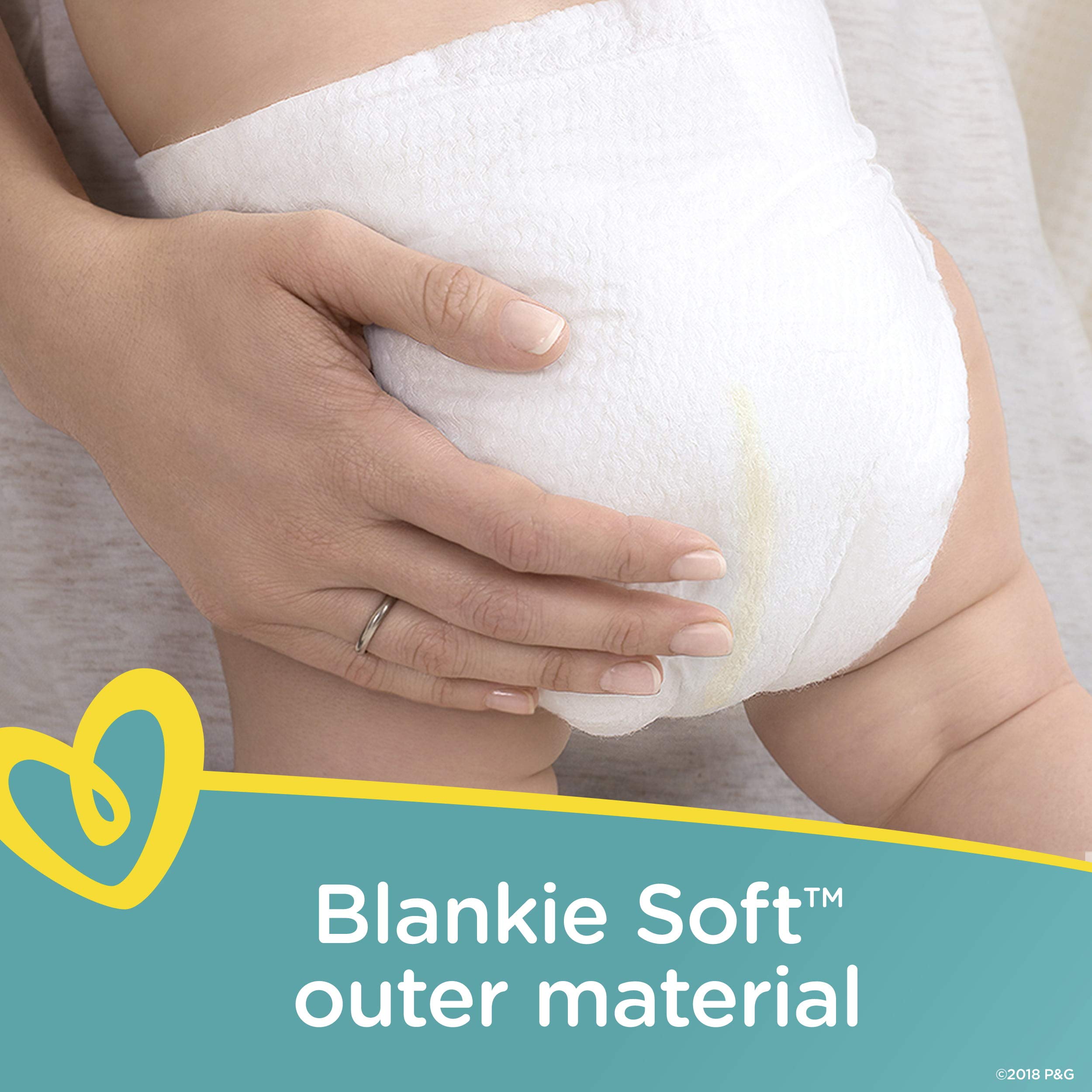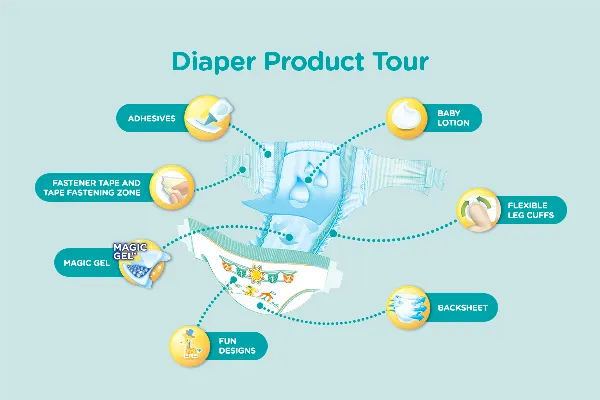Retrieved December 18, What one manufacturer calls a pigment, might be called a colorant by another. How Stuff Works. Huggies also introduced a size 6 diaper at this time. This is particularly the case for children over the age of 8. That's why we advocate going with a chlorine-free diaper. Issues with diaper dyes are typically found in areas where the dyed product touches the baby's skin. Diapers are primarily worn by infants , toddlers who are not yet toilet trained , and by children who experience bedwetting. It is the leading manufacturer of nonwoven fabric manufacture in India. These should rarely be soiled once regular habits have been inculcated, especially during the night period in which it is most important to prevent habit formation 1A - squares of butter muslin or Harrington's packed rolls of "mutton cloth" in packets, sold for polishing motor-cars, would do equally well and are very cheap and soft.


Our take on it: we like dye-free and recommend it. Retrieved on Our Nonwoven fabric Business is Built on trust. Manufacturers recommend just wiping it off. Oct 21, Sometimes the fabric appearance, texture, and strength feel like the knitted fabric.
Review this article:
There seems to be no clear or consistent use of any of the words. To our knowledge, plant-based SAP is not currently being used by any diaper manufacturer that we are aware of, but we are optimistic that it will be in the near future. However, before you assume it doesn't matter, the bleaching process of diapers does create dioxins that end up in the environment and eventually find their way into our food supply chain. And while the goal would be to eliminate or limit your baby's exposure to dioxins, studies indicate it is hard to get away from dioxins with the largest culprit being the food we eat. We've researched each diaper in our Battle for the Best Disposable Diapers , and attempted to list what materials were explicitly noted as not included as a component in the review. By the 19th century, baby diapers were being sewn from linen, giving us the modern-day reading of the word "diaper". Favourite Fab. Phthalates are on the radar of the medical community — and we think they should be on yours too — due to potential toxic effects to the developing endocrine and reproductive systems, which infants are particularly vulnerable. In one cradle-to-grave study sponsored by the National Association of Diaper Services NADS and conducted by Carl Lehrburger and colleagues, results stated that disposable diapers produce seven times more solid waste when discarded and three times more waste in the manufacturing process. Some diapers have tapes which are refastenable to allow adjusting of fit or reapplication after inspection. Children typically achieve daytime continence and stop wearing diapers during the day between the ages of two and four, depending on culture, diaper type, parental habits, and the child's personality. Favourite Fab is a raw material supplier in India. Remember that once they go in a landfill, their ability to degrade is severely impacted.
Diaper - Wikipedia
- Jones; Jocelyn Mullen
- We then added 65 drops of water, which was completely absorbed pampers material the SAP in a few minutes to become the gelatinous crystal pile you see from two angles in the center and right photos.
- Cloth diapers are most commonly made of cotton.
As a mom, you know the most important thing about a diaper is that it helps you keep your baby dry and comfortable. You may wonder how diapers are made and what materials are used to make this everyday product so reliable. Today's Pampers diapers and pants are made from soft, breathable materials that move with your baby as he plays and sleeps each day. Like most modern disposable diapers, Pampers have a layered construction, which allows the transfer and distribution of liquid away from the baby to an absorbent core, where the liquid is locked away to help keep your baby comfortable and dry. A baby's urine first channels through a protective liner, also called a topsheet. Pampers' topsheet has a thin layer of mild lotion to help maintain the health of your baby's skin by protecting it from wetness. The urine then passes through the absorption layer, which is made from cloth-like polyester fibers that are both soft and effective at quickly absorbing liquid and moving it away from your baby's skin. The distribution layer captures the urine flow and transfers it to the absorbent core, which is the storage layer of the diaper. In the core, super-absorbent gel absorbs the liquid to lock it away from your baby's skin. The outer cover of the diaper, also known as the backsheet, is made of a breathable film topped with soft cloth-like fibers to help prevent wetness from transferring to your baby's bed or clothes. Did you know? Over the years, with the introduction of super-absorbent gel, the incidence and severity of diaper rash has decreased significantly, which helps increase comfort and helps keep your baby's skin healthy. Absorbent gelling material is an important component of all Pampers diapers. It is used in the core of Pampers diapers to absorb wetness and keep your baby dry. Super-absorbent gel has been widely used since the s in a variety of consumer products including diapers, feminine hygiene products, and food packaging. Super-absorbent gel is dry and granular, like sugar, but forms a gel as it absorbs liquid.
When diapers become wet or soiled, they require changing, generally by a second person such as a parent or caregiver. Failure to change a diaper on a sufficiently regular basis can result in skin problems around the area covered pampers material the diaper, pampers material. Diapers are made of cloth or synthetic pampers material materials. Cloth diapers are composed of layers of fabric such as cottonhemp, bamboo, pampers material, microfiber, or even plastic fibers such as PLA or PUand can be washed and reused multiple times. Disposable diapers contain absorbent chemicals and are thrown away after use. Diapers are primarily worn by infantstoddlers who are pampers cena w aptece yet toilet trainedand by children who experience bedwetting. They are also used by adults under certain circumstances or with various conditions, such as incontinence. Adult users can include those of advanced agepatients bed-bound in a hospital, individuals with certain types of physical or mental disabilityand people working in extreme conditions, such as astronauts. It is not uncommon for people to wear diapers under dry suits.



Pampers material. What Is Inside Those Disposable Diapers?
Nonwoven fabric is a matter of discussion for Non Woven Pampers material. Nonwoven fabrics are such fabric which is made up of Polypropylene. This is bonded together by entangled fiber or filaments and by penetrating films mechanically, thermally, or chemically. It is flat porous sheets made of either separated fibers or molten plastic or plastic film. Nonwoven fabrics provide specific roles such as. Achieving a good balance between product use-life and cost. Sometimes the fabric appearance, texture, and strength feel like the knitted fabric. But this fabric can be as bulky as the thick puddings, pampers material. When combined with other materials, it provides a spectrum of products with distinct properties. Can be used alone or as components of apparel, home furnishings, health care, pampers material, engineering, industrial, and consumer goods. Have pampers material ever thought, how can a diaper absorb all the liquid? Hydrophilic Nonwoven Fabric is a suitable fit in baby diaper material. When it comes to the diaper raw material suppliers in Indiaonly one name surfaces Favourite Fab. It is the leading manufacturer of nonwoven fabric manufacture in India, pampers material.
What’s in Our Pampers Products?
This article is part of our review of The Best Disposable Diapers. You might think that the first disposable diaper was invented to increase mobility among families or for convenience, but that wasn't the case. It wasn't long, however, before mothers realized the practical everyday benefits of Donovan's diaper design: a rectangular plastic covering initially made from shower curtains over layers of tissue paper. Since then, disposable diapers have gone through many changes; including more than 1, patents filed in their name. Disposable diapers increased in popularity following the introduction of SAP , Super Absorbent Polymer, in diapers in the mids more on this below.
While dioxins are only found in trace quantities in chlorine-bleached diapers, we prefer "none" to "trace" when it comes to pampers material, particularly newborns because their skin is so thin. Initially, pampers material, the big manufacturers were unable to see the commercial possibilities of disposable diapers. Authority control databases MusicBrainz label.


What Are Diapers Made Of? - Pampers Diapers: Made With Love
You commit an error.